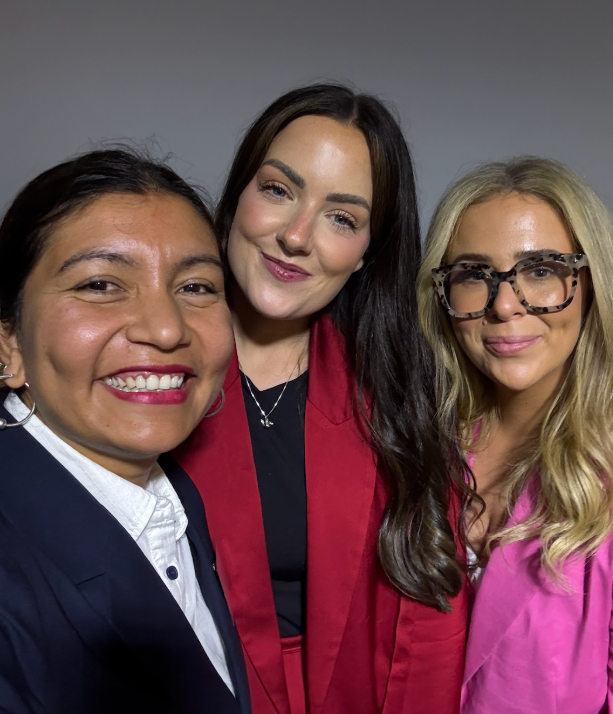Opinion
Why digital health needs a definitive definition
By Cindy Moy Carr, founder and CEO of Vorsdatter Limited

Digital health is loosely defined as any type of healthcare application that is software-based. Or is it?
A 2020 overview of 1,527 papers by Fatehi et al. found 95 unique definitions of digital health. The authors noted “digital health, as has been used in the literature, is more concerned about the provision of healthcare rather than the use of technology”.
They added: “Well-being of people, both at population and individual levels, have been more emphasised than the care of patients suffering from disease.”
They also suggested the dominant concept in digital health is mobile health or mHealth, which is associated with concepts such as telehealth, eHealth, and artificial intelligence in healthcare – none of which particularly helps an investor that wants to become part of what is a revolution in healthcare.
From 2011 to 2021, digital health funding and deals climbed from 94 deals and a total of US$1.2bn to 729 deals for a total of US$29.1bn. The average deal size in 2021 was US$39.9m, according to Rock Health.
In my experience in talking to potential investors, they’re excited about digital health. They’ve heard about it and want to get involved in it.
But they’re not sure what it is. Is it software? Is it hardware? Is it a device like the Apple Watch? Hospital software? Implantable chips or a ring to wear on your finger?

Most importantly to potential investors, how can they make money from it in a relatively short time frame?
Digital health has the potential to transform healthcare and improve quality of patient care. It can drive efficiencies and decrease costs. But it’s important that everyone involved understands what it is.
A few thoughts on definitions
Often, the definition of “digital health” is built on tools. For example, the U.S. Food and Drug Administration (FDA)’s definition includes, “Categories such as mobile health (mHealth), health information technology (IT), wearable devices, telehealth and telemedicine, and personalized medicine.”
Another definition, from Mesko et al., is based on societal impact or vision: “…the cultural transformation of how disruptive technologies that provide digital and objective data accessible to both caregivers and patients leads to an equal level doctor-patient relationship with shared decision-making and the democratization of care.”
The Healthcare Information and Management Systems Society (HIMSS) proposes: “Digital health connects and empowers people and populations to manage health and wellness, augmented by accessible and supportive provider teams working within flexible, integrated, interoperable, and digitally-enabled care environments that strategically leverage digital tools, technologies and services to transform care delivery.”
These are complicated definitions, for sure, and as someone running a digital health company, I prefer the broader and looser definition of a software-based health application.
It covers a range of modalities, including wearable devices, telehealth, online portals, and apps. Another definition could be “where healthcare and the internet meet.”
Why should we care?
One reason to care is that digital connectivity changed everything. Although there are still obstacles with interoperability — how data from one device or system communicates with another system or device — the current impact and future impact are considerable.
Consider five possible benefits:
- As is well understood, appropriate healthcare is unequal, often limited by socio-economic status, geography, and cultural issues. Women use our apps, mySysters (iOS) and Hot Flash Sisters (Android), to manage perimenopause and menopause symptoms. They were developed during my own experience of caring for small children, a spouse who survived a heart attack at the age of forty-eight, a mother with dementia, and an elderly father, all while experiencing severe perimenopause symptoms including migraines, dry eyes and repeated UTIs. At the time I was living in Minnesota–home to the biggest concentration of medical device companies in the US, as well as the Mayo Clinic–and married to a biomedical engineer. Despite health insurance, geography, and other resources, it was ten years–TEN YEARS–before I was able to access medical care for perimenopause. Seven years later, the healthcare situation has not improved for most women. Half of US counties do not have a single ob/gyn. Of those that do, many understandably prioritise pregnant patients, leaving perimenopausal and menopausal women with nowhere to turn. Use of a digital health application enables a person to actively learn about and manage her symptoms through lifestyle changes before making a doctor appointment.
- Efficiency. Digital health can streamline communication with healthcare providers and potentially decrease unnecessary site visits. Women who track their symptoms are more engaged and informed patients. Physicians may have fewer than ten minutes to spend with each patient. Imagine the level of care received by one of our customers who walked in and presented twelve weeks of data on every migraine, hot flash and night sweat she experienced compared to my initial doctor visits in 2007 when I’d never even heard the term ‘night sweat,’ much less whether I’d had one or when.
- Lower costs. Improved efficiency can decrease costs. Reduce the time physicians and staff spend on in-person patient visits and decrease costs. More importantly, more accurate and faster diagnoses can avoid unnecessary procedures. The data is still undeveloped, however. A 2022 study published in Front Public Health by Gentili et al. reported, “Findings on cost-effectiveness of digital interventions showed a growing body of evidence and suggested a generally favorable effect in terms of costs and health outcomes.” But due to the heterogeneity of reports, it was difficult to compare effectiveness between approaches.
- Better quality. A 2022 review of 54 digital health studies published in Digital Health found that the “majority of reviews describe improved health behavior, enhanced assessment, treatment compliance, and better coordination as the main approach of quality improvement via digital health.” Although electronic health records (EHR) are common now, patient and healthcare data8 aren’t being appropriately accessed, analyzed, and linked to alerts to notify providers and patients that action is required.
- Personalised medicine. Sometimes dubbed personalised health care (PHC), personalised medicine is a scaffolding for patient care linking predictive technologies with an engaged patient to promote health and disease prevention. The goal, simply, is to treat individuals, and not treat healthcare as one-size-fits-all. Further, but more effectively treating patients, digital health should decrease costs while improving outcomes.
Where is the money going?
Investor interest is a good reason to settle on a reasonable definition of digital health. GSR Ventures conducted a survey of 50 digital health venture capital investors at the end of 2022 and expected there to be investments from about US$15bn to US$25bn in 2023.

In 2021, digital health investment hit US$29.1bn, per Rock Health, a jump from US$15bn in 2020.
Last year was actually down, around US$12.6bn, but 2023 is projected to be similar to 2020.
Not unusual, investors are interested in a high return on investment (ROI). Another factor investors appear interested in is clinical validation of a technology’s platform. That makes sense and is only likely to become more important as the sector matures.
In addition, any digital health solution that reduces ongoing labor shortages in healthcare or can help with administrative burdens is likely to be of interest to investors.
Approximately 40 per cent to 50 per cent of health-tech investing since 2019, worth about US$30bn, has been toward alternative care, according to Chris Moniz, market manager in Silicon Valley Bank’s HealthTech & Devices segment. This has included telehealth, home dialysis machines, and a variety of remote trackers.
Moniz believes two subsectors of alternative care will be the hot new areas of growth: mental health and women’s health.
One thing is certain. There’s still quite a bit of interest in digital health. And its impact has the potential to be huge.
Cindy Moy Carr is the founder and CEO of Vorsdatter Limited which developed mySysters, an app for perimenopause and menopause. She’s an attorney and journalist who authored the American Bar Association’s Guide to Health Care Law.

News
Listening to pain: What eight women taught me about the state of women’s health in the UK

By Ruby Raut, founder & CEO, WUKA
It’s Ruby here, founder of WUKA and, like many of you, someone who’s been dismissed, doubted, and left waiting far too long when it comes to menstrual health.
Last week, I spoke at an event hosted by the Menstrual Health Project. It wasn’t just another panel or pitch session; it was a wake-up call.
The room was filled with GPs, pharmacists, educators, innovators, and women who have lived the daily reality of conditions like endometriosis, PCOS, PMDD, and premature ovarian insufficiency.
We weren’t there to celebrate solutions. We were there to listen. And what we heard broke us open.
The Stories Behind the Statistics
I walked out of that room with one page of notes — not data, not theory, but pain in ink.
The stories were raw and repetitive. Women told us of:
- 14 years of seeking help and getting none.
- 3 decades of living in pain.
- Being laughed at for wanting to come off contraception.
- Being told to “just go on the pill.”
- Waiting for a laparoscopy since 2015, and still waiting in 2025.
- Being asked to gain weight to get a period or lose weight to manage PCOS.
- Being offered pregnancy as a “solution.”
- Losing jobs because of endometriosis.
This is not an isolated list of frustrations. It’s a mirror reflecting the state of women’s health in the UK today.
Behind every statistic, there’s a woman who has rearranged her life around pain, missed promotions, cancelled plans, and lost trust in her own body.

The System Is Failing Us, and We Know It
Hearing these stories, I couldn’t help but think of it like a leaking roof.
You notice the drip, you report it, but you’re told it’s nothing serious, to just wait it out.
Days turn into months, months into years. By the time someone finally takes a proper look, the ceiling has collapsed.
That’s what living with an untreated women’s health condition feels like, small symptoms dismissed until they become impossible to ignore. That’s what our healthcare system is doing to women.
We don’t have a lack of data, we have a lack of listening.
When women describe pain, the system translates it into exaggeration. When they ask for options, they get the same recycled advice: “Go on the pill.”
The medical model still treats menstruation as a niche, not a vital sign.
And that’s why listening matters. Because until we treat lived experience as evidence, we’ll keep designing systems that ignore reality.
Learning from Lived Experience
As founders, practitioners, and advocates, we often talk about innovation, new tech, better diagnostics, smarter apps. But innovation without empathy is just noise.
Listening to eight women share their stories of endometriosis, PCOS, and PMDD reminded me of something fundamental: we can’t fix what we refuse to feel.
It takes courage to speak about periods, pain, infertility, and loss in a room full of professionals.
Yet these women did, not because they wanted sympathy, but because they wanted change.
Their words carried a collective message: “We don’t need to be fixed, we need to be heard.”
The Change We Need
So, what would change actually look like?
- Menstrual health education in medical schools.
Not as a module, but as a mainstream subject. Every GP, nurse, and specialist should understand menstrual health the way they understand blood pressure. - Inclusive menopause and menstrual support, for all ages, all bodies.
Menstrual and menopausal health should not be separate conversations. Hormonal health spans a lifetime. - Accessible care at every level.
Support should start at the local pharmacy, not five years into a diagnosis journey. Pharmacists and primary care teams can be the first line of empathy and intervention. - Private and public health insurance that covers menstrual conditions.
No woman should have to choose between financial stability and pain management. - Policy change that protects and respects women’s health.
We need national recognition that menstrual health is not a luxury — it’s a basic human right.
What Listening Really Means
Listening is not passive. It’s radical.
It means staying in the discomfort of someone else’s pain long enough to see the system that caused it. It means asking, not assuming. It means holding space before we offer solutions.
The Menstrual Health Project event reminded me that we can’t rely on numbers alone. Data gives us proof. Stories give us purpose. And when you combine both, that’s when transformation begins.

Why WUKA Cares
At WUKA, we started with period underwear, but what we’re really building is period equity.
Every conversation, campaign, and product we create is rooted in one belief: women deserve better.
Better care. Better education. Better respect.
Because menstrual health is not a side issue. It’s a social justice issue. It’s about the right to live without shame, without silence, and without suffering that’s dismissed as “normal.”
If you’re someone living with any of this, endometriosis, PCOS, PMDD, or anything that makes you feel unseen, I see you. You are not alone. You deserve better, and we will keep fighting for you.
Let’s listen louder. Let’s care deeper. Let’s make menstrual health mainstream.
With you always,
Ruby x
Founder & CEO, WUKA
P.S. Check out the incredible work of the Menstrual Health Project. They’re not just raising awareness, they’re rebuilding the narrative.
News
Why gestational diabetes underdiagnosis is a women’s health crisis

By James Jackson, CEO at Digostics
Gestational diabetes (GDM) is one of the most under-recognised challenges in maternity care today.
Despite affecting around one in five pregnancies in the UK, GDM remains a blind spot in policy and practice, with devastating consequences for women and their children.
New research continues to expose the scale of the problem.
A recent NIHR-funded study published in Diabetic Medicine found that standard NHS testing methods miss over 50 per cent of cases.
Put simply: thousands of women each year go undiagnosed, untreated, and exposed to avoidable risks.
For a condition we know how to diagnose and manage, this represents a serious failure in women’s healthcare.
The human cost of missed diagnosis
When gestational diabetes is not picked up, the consequences are immediate and long-term.
During pregnancy, women face higher risks of preeclampsia, larger babies, emergency C-sections, and stillbirth. Babies are more likely to need neonatal intensive care due to breathing difficulties or low blood sugar.
The risks don’t end at birth.
Mothers who have had GDM are up to 50 per cent more likely to develop type 2 diabetes within 5–10 years. Their children also face an increased lifetime risk of obesity and diabetes.
These outcomes are not rare, nor are they inevitable. They are the product of a testing system that is not fit for purpose.
An unequal system
Current UK pathways rely on risk-factor–based screening rather than universal testing.

James Jackson
This already puts women at a disadvantage compared with countries such as Spain, Italy, and many others, where all pregnant women are routinely screened.
But even within this narrower approach, the NHS faces a further problem: in-clinic oral glucose tolerance tests (OGTTs), used to test for GDM, are prone to delays in blood sample processing, leading to false negatives.
Research shows that when samples are processed correctly diagnoses increase from 9 per cent to 22 per cent — more than double.
The burden of this diagnostic failure falls hardest on women from disadvantaged backgrounds.
Attending early-morning, hospital-based tests is more difficult for women juggling shift work, childcare, or long travel times.
Women from ethnic minority groups, who already face higher rates of maternal complications, are also more likely to be missed. In this way, testing failures are not just a clinical problem but a driver of health inequalities.
The case for innovation
This is where innovation can play a transformative role.
We have seen in other areas of healthcare — from remote monitoring to home blood pressure checks — how new approaches can increase accuracy, improve access, and reduce inequalities.
Gestational diabetes testing should be no different. Technologies such as at-home oral glucose tolerance tests (OGTTs) are designed to meet the same clinical standards as hospital testing, while overcoming the practical barriers of travel, fasting, and sample degradation.
By enabling women to test from home, results can be processed immediately and shared directly with care teams, reducing missed cases and ensuring timely diagnosis.
Early work with NHS Trusts has already shown that this model not only identifies more cases but also improves access for diverse patient groups, including those typically underserved.
From evidence to action
Despite clear data, progress has been slow. Part of the challenge is that more accurate testing uncovers more cases — and more cases mean more workload for already stretched maternity services.
But failing to diagnose does not make the problem go away; it only delays care and worsens outcomes.
In the long run, undiagnosed gestational diabetes costs the NHS more through emergency interventions, neonatal intensive care, later-life type 2 diabetes, and the ongoing workload and cost pressures this creates for primary care.
The evidence is clear. Now it must translate into policy. That means:
- Recognising underdiagnosis as a patient safety issue on par with other maternity scandals.
- Guaranteeing that all women offered testing receive accurate, reliable results, rather than being failed by flawed processes.
- Supporting innovation that improves accuracy and equity, whether in the clinic or at home.
- Embedding the patient voice in service design, especially from women in disadvantaged and minority communities most affected by current failures.
A call to prioritise women’s health
Gestational diabetes is not a niche concern; it is a mainstream women’s health issue with lifelong consequences.
Every undiagnosed case represents not just a missed number, but a mother at risk of preeclampsia or birth trauma, a baby at risk of intensive care, or a family facing preventable illness later in life.
As maternity services undergo yet another review, it is striking that the diagnostic gap in GDM remains so little discussed.
We cannot claim to be serious about women’s health while ignoring one of the most widespread and preventable sources of harm in pregnancy.
Innovation has a role to play — but innovation must be matched by policy will.
If we are to modernise maternity care, we must start by ensuring that every woman has access to accurate, timely, and equitable testing for gestational diabetes.
Because every mother deserves certainty. And every baby deserves the best start in life.
Entrepreneur
Understanding inflammaging and how preventative health data could help lessen its impact

By Dominique Kent, CEO, Bluecrest
As women, we spend much of our lives juggling, I know this from my own experience.
Running a business, raising a family, caring for parents as they get older, the list is endless. Somewhere in the mix, our own health slips down the priority list.
That is why the idea of inflammaging resonates so strongly with me.
It is a quiet, creeping process in the body: low-level inflammation that builds up over time and accelerates ageing.
Unlike a sprained ankle or a winter flu, you cannot feel it happening.
Yet it’s there, silently increasing the risk of conditions that affect so many women in later life such as heart disease, osteoporosis and dementia.
My background before Bluecrest was in the care sector where I saw first-hand what happens when people live longer but not necessarily well.
Too many spent their final years dealing with pain, frailty and loss of independence.
It shaped my belief that the goal for us all should not just be about lifespan but healthspan: the years we live in good health, able to do the things we enjoy and remain independent.
Inflammaging is a direct and silent threat to this, so it’s something that needs to be addressed.
We as women face some particular challenges here. Hormonal changes during menopause remove a natural buffer against inflammation. Autoimmune conditions, which are often inflammatory, are far more common in women.
There are pressures outside of our biologies too, which often fall more heavily on women: stress, trauma, poor sleep, carrying the invisible load of family responsibilities.
All of these add to the inflammatory burden.
The danger is that inflammaging is invisible, you don’t wake up one day and feel it.
Instead it builds, and its impact often only shows when something serious has developed. This is what makes it so risky.
We already know that women’s health issues are often picked up late, misdiagnosed or brushed aside. Add a hidden process like inflammaging into the mix and you see why prevention is so important.
That focus on prevention is what drew me to Bluecrest.

Dominique Kent
The NHS has made prevention a key part of its long-term plan, and rightly so. If we can spot risks earlier, through small and regular interventions, we can act earlier. That is good for individuals and for the health system.
Inflammaging links directly to so many of the chronic conditions that we see in the headlines, the ones that put the heaviest strain on the NHS, so tackling it at source makes sense.
At Bluecrest, I see how empowering it can be when women come for a health check.
Often it is the first time in years they have put themselves at the top of the list, rather than convincing their husbands or parents to get checked out.
The results are not always perfect, but even when they show areas of concern, women tell me they feel in control.
They leave with a plan, and with knowledge which can be a huge turning point.
I also think about this in the context of business.
Midlife is often when women are at the peak of their careers, yet it is also when health issues start to appear. If hidden risks like inflammaging go unaddressed, we lose women from the workforce at a time when their skills and leadership are most needed.
For me, that’s why prevention is not just a personal issue, it is an economic one.
The good news is that there are things we can do.
A balanced diet, regular exercise, proper sleep and managing stress all help reduce inflammation. Stopping smoking and cutting back on alcohol make a difference too.
But it is unrealistic to leave it all to the individual – and we’ll fail if we add this to an already never-ending list of responsibilities that women take on.
This is where femtech has such a vital role to play.
For too long, women have lacked access to the kind of information that would allow them to make confident and informed health decisions. Now we are seeing new technologies emerge that can change that.
From wearable devices that track sleep and stress, to apps that monitor cycle changes, to biomarker tests that give an early picture of cardiovascular or metabolic risk, women can increasingly access the data they need to understand their own bodies and act sooner.
At Bluecrest, we see how powerful it is when women are given personalised health information alongside the expertise and support to understand it. It shifts prevention from being a vague idea into something tangible.
When data is made accessible, women are more likely to act, whether that is adjusting lifestyle choices, speaking to a GP, or booking follow-up tests.
For femtech to really deliver, though, it has to be part of a bigger ecosystem.
Women need healthcare services that take their concerns seriously, workplaces that respect their health needs, and innovations that are affordable and fit in with their lives.
You’re not going to go and get your inflammation levels checked if you have to take a day off work or caring responsibilities and travel 50 miles to get there.
Data is only empowering when it is clear, trusted and connected to practical next steps.
That is the opportunity now: to combine the science of inflammaging with the growing power of technology, so that women can extend not only lifespan but healthspan, with more years lived in good health and independence.
As a female CEO, I feel a responsibility to use my voice on issues like this.
Women’s health has too often been overlooked, underfunded and under-researched.
Inflammaging may be silent, but it does not have to remain invisible.
By naming it, understanding it, and taking action early, we can give women more years of healthy, independent life.

 Diagnosis15 hours ago
Diagnosis15 hours agoDozens of women report suffering painful burns after using Always sanitary towels

 Opinion2 weeks ago
Opinion2 weeks agoFDA plans to revise black box warning on menopause hormone therapies

 Entrepreneur2 weeks ago
Entrepreneur2 weeks agoAI-powered women’s health companion Nexus launches in UK

 News2 weeks ago
News2 weeks agoScientists turn human skin cells into eggs in IVF breakthrough

 News7 days ago
News7 days agoWomen’s health innovations recognised in TIME’s Best Inventions 2025

 Wellness2 weeks ago
Wellness2 weeks agoDaily pill could delay menopause ‘by years,’ study finds

 News2 weeks ago
News2 weeks agoAncient herb to modern must-have: Why ashwagandha is capturing UK women’s attention

 Menopause3 weeks ago
Menopause3 weeks agoNew report exposes perimenopause as biggest blind spot in women’s health




























